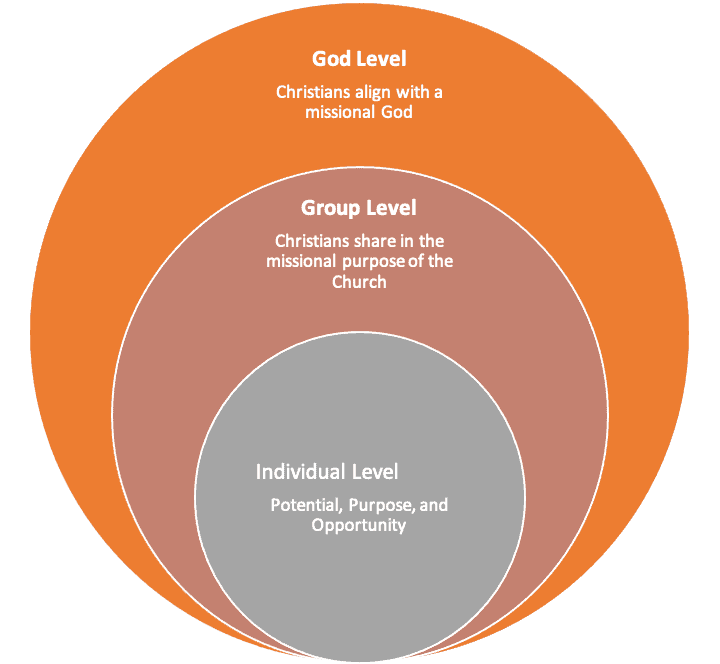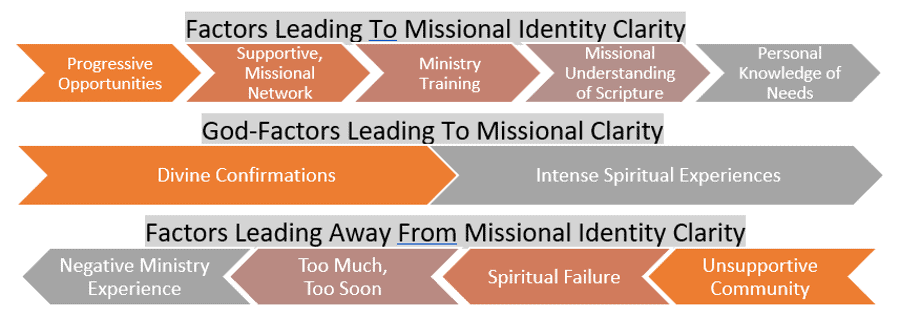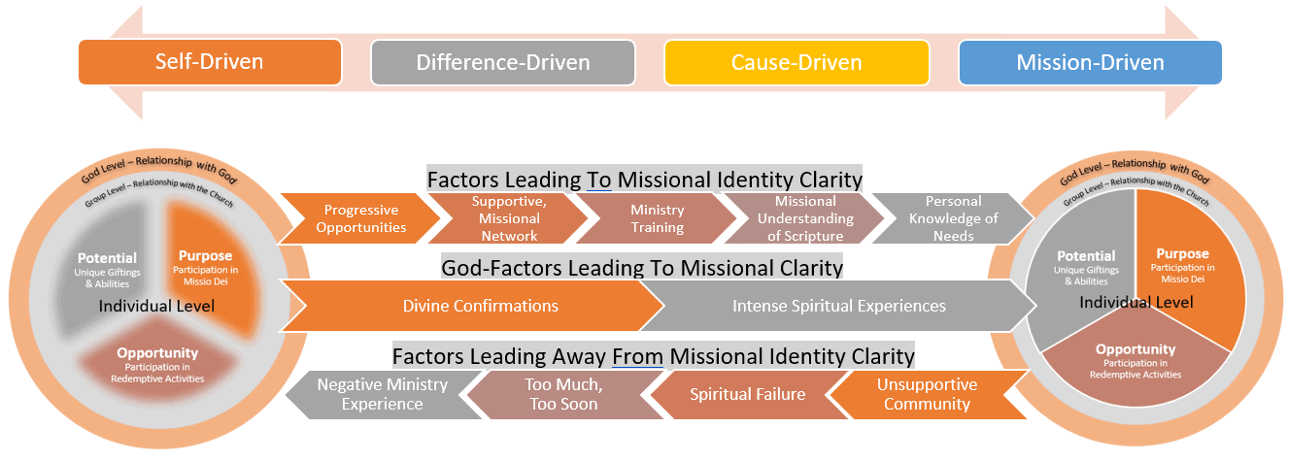The Need for Missional Christians in Urban Areas
It ended up being one of the worst meals of my life. Mark, a friend who helped me at Main Street Chapel, an inner-city ministry, invited me to a local restaurant. I had no clue of his purpose, but it soon became evident when he let me know of his plans to attend a more traditional-style church. He stated that while he believed in inner-city ministry, he just did not want the ministry responsibility that came with being part of one. He hoped for a church where he could go and be spiritually fed.
The hamburger froze in my throat as I processed Mark’s words. I depended on his help and moral support. I had even imagined that during the meal we might discuss ministry dreams and possible ways he could become more involved at Main Street. All of those thoughts immediately evaporated. His decision came as a personal blow. While on the surface I calmly thanked him for letting me know and for his time serving, underneath I felt shaken and disillusioned. My mind flooded with questions. Had I done something wrong? Was inner-city ministry really unnecessary? What were the real reasons why he was leaving?
In reality he was being honest about his reasons for leaving. While he valued the notion of ministry and wanted someone to do it, he did not feel that the “someone” needed to be him. What I experienced and he expressed in the meeting represents an issue that impacts many churches in the U.S., both urban and rural. The typical U.S. Christian views missions as an extracurricular activity rather than embracing it as central to every church’s and believer’s identity.1
Western Christian leaders have recognized this drift away from mission and begun emphasizing terms such as “missional” in an attempt to pull the Church back on course.2 There are missional seminars, missional conferences, missional churches, missional movements, and the list goes on.3 Nonetheless, despite the popularization of the term “missional,”4 the efforts of Christian leaders will fail unless they begin discipling individual Christians to be missional. Missional churches and movements can only realize their missional goals if every day Christians understand and “join in on God’s mission in the world.”5 A missional church or movement cannot exist apart from individuals who deeply identify with God’s mission.
There exists a need for missional Christians everywhere in the U.S., but especially in urban areas. Many churches left the cities in the 1960s and 1970s, creating a spiritual vacuum in urban communities.6 A dramatic rise in urban populations accompanied this vacuum and today over eighty percent of the U.S. population live in urban areas.7 Timothy Keller writes, “The people of the world are now moving into the great cities of the world many times faster than the church is.”8
Weak church influence and an increase in the urban population makes mission a priority for all urban Christians. Elton Trueblood recognized the need for urban churches to mobilize their congregations as early as 1970: “As we become more urbanized, the need for intelligent equipping of the lay ministry becomes greater rather than less.”9 More recently, Efrem Smith,10 former CEO of World Impact, echoes a similar sentiment, stating that the world needs more urban churches only if they commit to developing Christian leaders within the community. From a strategic perspective, urban Christian leaders need to focus on developing strong missional identity in their congregations.
Missional Identity
The trouble with developing missional identity becomes apparent right away with the word “missional.” No one universal definition exists. While many people use the word “missional,” very few have defined it clearly, and it has been used in many different ways.11 A review of the missional literature provides many descriptions of the term “missional” with different emphases and nuances. However, several major themes consistently appear that help in an initial description of missional and missional identity. At a very high level it can be said that a person with a strong missional identity possesses the following characteristics:
-
- The person views the primary purpose of the Church and themselves as participating in the missio Dei.12
- This view roots itself in the belief that God is a missionary God actively seeking humankind’s redemption.13
- These beliefs motivate the person to habitually participate in redemptive activities.14
While this is a good starting description for missional identity, a review of identity literature shows it is much more complex. Identity consists of levels of influence–individual identity (uniqueness), group identity (similarities), and for Christians a God-identity (created and gifted by God).
At the individual level, a person’s identity comes from the answers to three questions–What is my potential? What is my purpose? And what opportunities exist for me to live out this identity?15 Even among families, people will have unique answers or combinations of answers to these questions. These areas of uniqueness help people understand themselves and differentiate themselves from others.
Most identity theories include a second level of identity, the group level.16 People understand their identity because of the groups with which they associate.17 Group association solidifies what commonalities an individual has with others in the group and also provides a reference to understand individual uniqueness.
In addition to these two levels, for Christians a third level of identity influence exists that recognizes the influence God has on a Christian’s identity–the God level. In scripture we find that the identity of all believers is created and shaped by God (2Cor. 5:17; Gal. 3:28 Eph. 2:10). In addition, every Christian has been gifted by God with special gifts for ministry (1Cor. 12; Eph. 4:7).
These levels serve as a framework for understanding an individual’s missional identity. At the individual level a person’s missional identity comes from the three questions–“What is my purpose?” becomes “What purpose and specific cause or ministry does God have for me?” “What is my potential? becomes “What gifts and abilities has God given me?” And “What opportunities exist for me to live out this identity?” becomes “How can I live out my God-given purpose and potential in the church and in the world?” At the group level, the Christian’s missional identity comes from his or her association with the Church whose purpose is redemptive.18 At the God level, a relationship with God influences the Christian’s identity because through Him they understand who they were created to be. Also, as they align with God, they align with His missional purposes.19 Figure 1 reflects this missional identity.

While this description of missional identity may seem unnecessarily complex, Christian leaders need to recognize these different levels that influence people’s missional identity. If a leader focuses on developing missional identity only at the individual level people may fail because they do not recognize the importance of the local church to mission. Or if a leader fails to develop a believer’s missional identity at the God-level, the believer may develop a strong social conscience but fail to align with the spiritual side of God’s redemptive mission in the world.
Missional Identity Development
The question now arises of how to develop this missional identity. Although all Christians have a missional identity, it may need to be strengthened and clarified by the leaders in the church (Eph. 4:7-12). The development process consists of helping people move through various phases of missional identity by creating an environment conducive to missional identity development. The phases of missional identity and the factors needed to create an environment conducive to missional identity development are discussed below.
Missional Identity Phases
Engagement in ministry does not mean a Christian has strong missional identity. A person may engage in ministry for many reasons some of which may ultimately lead away from the missio Dei. Christian leaders need to recognize this and not content themselves with merely mobilizing people into ministry engagement. The underlying motivations and identity need to be shaped. Christians commonly move through four different phases in regard to missional identity. These phases include: self-driven, difference-driven, cause-driven, and mission-driven.
A person may engage in ministry for many reasons some of which may ultimately lead away from the missio Dei. Christian leaders need to recognize this and not content themselves with merely mobilizing people into ministry engagement.
In the self-driven phase, how the church benefits a person and his or her interests drives how he or she will associate with the church and its mission. These people remain at the center of what God is doing rather than merely participating in it. They need to experience some event that creates identity disequilibrium to move out of this phase.
In the difference-driven phase, a person experiences an internal desire to make some type of positive difference in the world. This desire motivates him or her to engage in service activity. This phase has a danger in that the person may focus on superficial change and want it to occur quickly. If the anticipated change does not happen as expected or quickly enough, then the person may become disillusioned with ministry or take out their frustrations on those who have disappointed them.
In the cause-driven phase, a person becomes passionate and develops a sense of “ownership” about a specific cause. This cause motivates them to invest significant amounts of energy and resources toward it. This phase also has a danger in that the person may get frustrated and speak out against those who do not fully support or participate in his or her specific cause. Also, he or she may sacrifice or overlook eternal purposes in his or her passion for meeting temporary needs.
The final phase is mission-driven. In this phase, the Christian harmonizes his or her desire to make a difference and passion for a cause with God’s redemptive purposes. They understand that ultimately all missions flow from God and that they have the responsibility to live a life of obedience to Him.
Although Christians ultimately should arrive in the mission-driven phase, they will likely move through many, if not all, of the phases as they clarify their missional identity. Also, Christians can revert backward (typically to the self-driven phase) as they encounter negative events or experiences in their lives. See Figure 2.

Missional Identity Factors
Identity change happens in people when an event or experience creates identity disequilibrium.20 The event or experience causes them to realize their perspectives, stances, perceptions, etc. are inconsistent with what they have experienced. This then leads them to begin seeking for ways to create internal consistency. Certain factors, especially when combined, create the disequilibrium needed for people to make a movement in their missional identity both positively and negatively (Figure 3). Five positive factors move people forward through the phases and four negative factors move people backward. Two additional positive factors require God’s involvement and cannot be directly controlled by Christian leaders. The factors are briefly described below.

Positive Factors
An environment that encourages missional identity growth includes as many of these positive factors as possible. While the factors can occur without intentionality, Christian leaders should make an effort to create an environment that fosters these factors.
- Progressive Opportunities – People look for opportunities to live out their identity. “Open doors” and obstacles are often seen as God’s guidance for people.
- Supportive, Missional Network – Creating an environment that encourages missional identity growth includes as many of these as possible.
- Personal Knowledge of Needs – Knowledge leads to vision. Finding a personal cause takes a person to a new level in their missional identity growth.
- Missional Understanding of Scripture – The ability to view scripture through a missional hermeneutic and see the “missionary” God provides the theological foundation and motivation for being a missionary people.
- Ministry Training – People don’t thrive when they feel they are failing. They need to be properly placed and trained.
God Factors
Missional identity ultimately comes from God. For a person’s missional identity to grow they need to have a real relationship with God. While experiences with God cannot be manufactured, Christian leaders can create space (prayer meetings, retreats, etc.) for people to experience God.
- Divine Confirmations – Many younger Christians do not experience an explicit calling to ministry prior to ministry involvement. Rather they find their calling by following opportunities that become open to them as they seek God’s will.
- Spiritually Intense Experiences – Retreats, prayer meetings, times of intense worship, and points of surrender all bring people into close proximity with God. These experiences realign the person’s life priorities with God’s will. Inevitably, alignment with the missionary God’s will leads toward a growing clarity of the believer’s missional identity.
Negative Factors
Some factors negatively impact a person’s missional identity growth. Creating an environment that encourages missional identity growth is as much about avoiding the negative factors as it is of creating positive ones.
- Unsupportive Community – Missional identity withers amidst conflict and a lack of care. Criticism, a lack of interest in a person’s personal life or calling, organizational conflict, or just a lack of missionally-minded peers or mentors contribute to an unsupportive community.
- Negative Ministry Experiences – People need to be properly placed, trained, and guided in their ministry experiences. Leaders need to avoid the temptation of placing people just to fill a position. Also, they should follow up regularly to ensure they have the training and support they need.
- Too Much, Too Soon – Too much responsibility too soon, especially without support or training, overwhelms people negatively. They need small, progressive ministry opportunities with training and support.
- Spiritual Failure – Spiritual failure causes people to give up on ministry. Leaders should watch for the warning signs and discretely make themselves available.
Model of Missional Identity Development
The identity, phases, and factors of missional identity combined create the model of missional identity development in urban Christians. Missional identity development in Christians moves along a continuum of phases and occurs as individuals discover their missional identity in relation to themselves, the church, and God through overcoming factors that lead away from, and embracing those factors that lead toward, missional identity. Missional identity development should occur within the context of the local church (Eph. 4:7-16). If it occurs outside of the local church, the connection between the missio Dei and the person’s efforts weaken and may eventually cease to exist. See Figure 4 below.

The missional identity factors have a contributing relationship with the phases of missional identity. As these factors occur in a person’s life, they increase the likelihood that the person will move forward or backward in their missional identity development. However, they do not necessitate that a person will move forward or backward.
Each factor isolated by itself will have only a limited effect on a person’s missional identity. To cultivate missional identity development, Christian leaders should focus on creating an environment that maximizes the positive factors, minimizes the negative factors, and creates space for God to work. As this environment is created in the local church both the individuals and the local church become more missional in their identities.
Practical Implementation
Practically, the model of missional identity development provides a framework for Christian leaders desiring to mobilize urban Christians into ministry. The need for missional Christians in the cities is already great and grows every day. Becoming a church that develops missional Christians will not just happen. Christian leaders must intentionally create the right culture and environment. Several practical steps can be taken by Christian leaders to create the environment needed to develop missional identity among those for whom they are responsible. These steps include assessing, creating a ministry group, facilitating group ministry opportunities, providing ministry training opportunities, and allowing space for God to speak.
First, Christian leaders can assess the current missional environment of their church using the factors affecting missional identity. The assessment can be done in a variety of ways using surveys, focus groups, or informal conversations. It needs to include both those engaged and those not engaged in ministry activities. The results from this assessment should inform the leadership of changes needed to create an environment that better cultivates missional identity within the church. Some questions that can be asked include the following:
- In what ways do you feel the church has a missional emphasis?
- In what ways do church leaders serve as missional role models?
- What structures does the church have in place to cultivate a missional community and network within the church (ministry teams, regular ministry meetings, promotion of ministry conferences, etc.)?
- In what ways does the church support people in ministry or do they burn out or feel trapped in positions?
- How does the church offer ministry training opportunities consistently?
- In what ways does the church expose and engage members to the greater missional needs of the world (short-term mission trips, missionary meetings, missions books, etc.)?
- What pathways does the church have into ministry that are easily accessible for all members?
- How does the church create opportunities for its members to minister in their areas of passion?
- In what ways does the church encourage corporate spiritual activities that lead to encounters with God (prayer meetings, retreats, discipleship groups, etc.)?
Second, Christian leaders can facilitate a ministry group that meets regularly and allows missionally-minded people to share, plan, encourage, brainstorm, and pray together. The ministry group should not be the church board or some already existing church group but rather a group designed for people genuinely interested in ministry. The group should focus on the ministries of the members of the group and not limit itself to only “church” ministries.
Third, Christian leaders can facilitate group ministry activities. Some Christians have little desire to involve themselves in ministry because they have never experienced it. Others remain uninvolved because they do not know how to get involved. By creating group ministry opportunities open to everyone, people are given a chance to experience ministry and leaders become aware of those who may have an interest in becoming more involved.
Fourth, Christian leaders can provide ministry training opportunities open to everyone. Just sponsoring ministry training helps to create a culture that encourages missional identity. It signals that leadership values ministry and leaders want the congregation to have training to do ministry. Also, providing ministry trainings on a variety of topics (Muslims, children, evangelism, etc.) may help someone find their ministry cause or calling. Knowledge of ministry needs leads to ministry vision.
Fifth, Christian leaders need to allow God space to speak into the lives of those for whom they are responsible. Retreats, prayer meetings, and times of spiritual intensity should be encouraged. Regardless of whether the events directly correlate with missions, they often lead to missional outcomes… because as people align themselves with God, they align themselves with His purposes.
Notes
1 Darrell L. Guder and Lois Barrett, Missional Church: A Vision for the Sending of the Church in North America (Grand Rapids, MI: W.B. Eerdmans Publishers, 1998); Gheorghe Petraru, “The Missional Church in Perspective: Mapping Trends and Shaping the Conversation,” Mission Studies 29, no. 1 (April 2019): 134-135; Gregory Smith et al., “In U.S., Decline of Christianity Continues at Rapid Pace,” Pew Research Center, October 17, 2019 https://www.pewresearch.org/religion/2019/10/17/in-u-s-decline-of-christianity-continues-at-rapid-pace/; Ed Stetzer, “Monday is for Missiology: What is the Missional Church?–a New Series,” Christianity Today, October 12, 2015, https://www.christianitytoday.com/edstetzer/2015/october/missional-church-and-its-manifesto.html.
2 Michael Frost, The Road to Missional: Journey to the Center of the Church (Grand Rapids, MI: Baker Books, 2011), 17.
3 Ibid., 16.
4 Mike Breen, “Why the Missional Movement Will Fail,” Verge 2011, http://www.vergenetwork.org/2011/09/14/mike-breen-why-the-missional-movement-will-fail/, accessed September 5, 2020.
5 Miriam Ryan, Mentoring Young Adults for Identity Formation, Spiritual Growth and Missional Living at Peachtree Presbyterian Church (Fuller Theological Seminary, PhD diss., 2015), 9.
6 Mark Mulder, Shades of White Flight: Evangelical Congregations and Urban Departure (New Brunswick, NJ: Rutgers Press, 2015), 3.
7 UN DESA, “World Urbanization Prospect 2018” (United Nations, 2019). https://population.un.org/wup/Publications/Files/WUP2018-Highlights.pdf.
8 Timothy Keller, Center Church: Doing Balanced, Gospel-Centered Ministry in Your City (Grand Rapids, MI: Zondervan, 2012), 159.
9 Elton Trueblood, “The Laity,” in Toward Creative Urban Strategy, ed. George A. Torney (Waco, TX: World Books Publisher, 1970), 62.
10 Efrem Smith, “Church Planting Among the Urban Poor,” Christianity Today, May 15, 2014.
11 Christopher Beard, “Missional Discipleship: Discerning Spiritual Formation Practices and Goals within the Missional Movement,” Missiology: An International Review 43, no. 2 (March 2015), 176, https://doi.org/10.1177%2F0091829614563059; see also Breen, “Why the Missional Movement Will Fail.”
12 Guder and Barrett, Missional Church, 11; Christopher Wright, The Mission of God’s People: A Biblical Theology of the Church’s Mission (Grand Rapids, MI: Zondervan, 2010), 267.
13 Petraru, “The Missional Church in Perspective,” 7; Perry Shaw, “The Missional-Ecclesial Leadership Vision of the Early Church,” Evangelical Review of Theology 37, no. 2 (April 2013), 134; Ed Stetzer, “Why Defining Missional Matters,” Christianity Today, July 28, 2014, http://www.christianitytoday.com/edstetzer/2014/july/why-defining-missional-matters.html; Wright, The Mission of God’s People, 267.
14 Darren Cronshaw, “Reenvisioning Theological Education and Missional Spirituality,” Journal of Adult Theological Education 9, no. 1 (June 2012): 9; Stetzer, “Why Defining.”
15 Shahram Heshmat, “Basics of Identity: What Do We Mean by Identity and Why Does Identity Matter?” Psychology Today, December 8, 2014, 1-2, http://gdelaurier.pbworks.com/w/file/fetch/134500821/Basics%20of%20Identity%20_%20Psychology%20Today.pdf.
16 Erik Erikson, Identity: Youth and Crisis (New York: W.W. Norton and Co., 1994), 22; Beverly Faircloth, “‘Wearing a Mask’ vs. Connecting Identity with Learning,” Contemporary Educational Psychology 37, no. 1 (July 2012): 186; Jamaal Matthews, et al., “Academic Identity Formation and Motivation and Ethnic Minority Adolescents: The Role of the ‘Self’ between Internal and External Perceptions of Identity,” Child Development 85, no. 6 (Nov-Dec, 2014): 2355-2373; Yisrael Rich and Elli Schachter, “High School Identity Climate and Student Identity Development,” Contemporary Educational Psychology 36 no. 3 (July 2012): 224; Vasti Torres et al., “Identity Development Theories in Student Affairs: Origins, Current Status, and New Approaches,” Journal of College Student Development 50 no. 6 (November-December 2009): 577.
17 Torres, “Identity Development Theories.”
18 Daniel Niles, Upon the Earth: The Mission of God and the Missionary Enterprise of the Churches (New York: McGraw-Hill, 1962).
19 Beard, “Missional Discipleship,” 185; Michael Goheen, “Nourishing Our Missional Identity: Worship and the Mission of God’s People,” in Praise of Worship: An Exploration of Text and Patience, ed. David J. Cohen and Michael Parsons (Eugene, OR: Wipf and Stock Publishers, 2010), 32; Alan Hirsch, The Forgotten Ways: Reactivating the Missional Church (Ada, MI: Brazos Press, 2016), xvii; Gregory Jones and Willie Jennings, “Formed for Ministry: A Program in Spiritual Formation,” The Christian Century 117 no. 4 (Feb. 2000): 124; Niles, Upon the Earth; Petraru, “Missional Church in Perspective”; Shaw, “Missional-Ecclesial Leadership Vision,” 134; John Stott, “The Living God is a Missionary God,” in Perspectives on the World Christian Movement: A Reader, eds. Ralph Winter and Steven Hawthorne (Pasadena, CA: William Carey Library, 2009), 9; Wright, Mission of God’s People, 24.
20 Torres, “Identity Development Theories,” 582.

